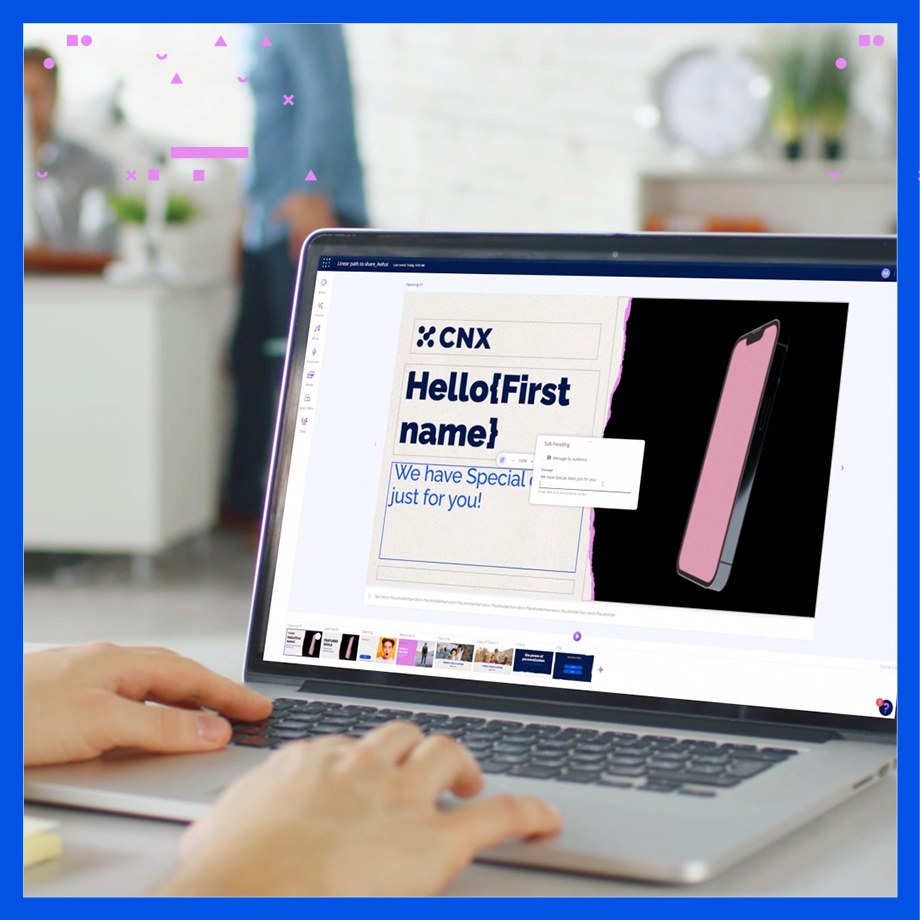In the Age of the Customer, consumers are more empowered to only interact with brands whose experiences delight them at every corner, and because of this customers are more likely than ever to disengage at the first sign of irrelevance. This is why it’s so important for brands (retail and otherwise) to be crafting their customer engagements in a way that is relevant and valuable at every single touchpoint. With video being the most powerful form of customer engagement in the market today, it’s extremely important that brands are not only executing but also viewing it from the correct lens.
At Etail West this year, we held an event in which our COO Mark Flaharty discussed the importance of video when it comes to crafting valuable customer experiences and why it is that most brands are looking at video the wrong way. He went on to explain that personally relevant video engagement at every touchpoint throughout the customer lifecycle is the future of customer experience. Then he delved into three video practices that brands are currently performing incorrectly, and how they can change them to get on track toward reaching this goal.
These practices included:
- Repurposing the same video spot everywhere
- Using video as only a brand medium
- Measuring video with only engagement metrics
By recognizing what is wrong with doing the above, brands will start seeing video for what it can be today and will then be able to use it to its full potential. Here’s a little more on what Mark suggested for each.
Why repurposing the same video spot everywhere, for everyone, is WRONG.
Mark began this section by reiterating the importance of relevance, and he explained that the reason for its importance is that empowered consumers know that brands are collecting their data so they expect the brands to be using that data. This directly tied into the key note of the conference this year, where Jenny Kaplan from Bloomberg interviewed the VP of Digital Solutions at Target Bruce Starnes. In the interview, Bruce stated that Target’s current company-wide strategy is “to create the BEST shopping experience for the guest” and he even said that “a large part of this is investing in tools that help them create personalized and unforgettable experiences for their digital customers.” Mark expanded on Bruce’s point by explaining that there are multiple degrees of personalization, and figuring out what to personalize and where is vital to the success of a personalization strategy.
The personalization capabilities that are available today have made it so that brands can produce content that addresses customers on a one-to-one level at scale; this includes video. Therefore, the fact that brands CAN produce unique video spots for each individual at scale in an efficient way means that they MUST do so to ensure empowered customers are receiving the value they expect. Bruce admitting that this type of personalization is the main initiative across all of Target, and even delving into the fact that they are purposefully looking to outdo Amazon, proves that any large brand looking to stay relevant in the market today should no longer be using one-to-many video engagements.
Why using video as a brand-medium only is WRONG
The next section of Mark’s talk was about how most brands aren’t only looking at the audiences of their videos incorrectly but are also looking at the purpose of the videos themselves in the wrong way. Due to the high cost and one-to-many messaging that has always been attributed to traditional video, brands have typically viewed it as a brand-medium only. With the rise of more advanced attribution systems and the addition of personalization though it is no longer sufficient to be treating video as though it can’t be both a brand-medium and a performance-medium.
By making each video relevant to an individual customer brands are better able to help said customer achieve his or her specific goals. This type of direct correlation makes it much easier for brands to tie real business value to every video initiative they try. Not only does this make video useful in a multitude of new use cases but it also makes it easier to get budget approved for video initiatives since a hard ROI can be attributed to it.
Why measuring video only with engagement metrics is WRONG
Finally, Mark closed out his session with a topic that directly correlated to his previous point, which was that brands need to stop measuring the success of video initiatives solely using engagement metrics. He went on to clarify that starting with video engagement metrics is always smart because it can help brands test and optimize the content within the actual video, but it’s important to start holding video initiatives accountable for deeper KPIs, as well. Some common business value KPIs that big brands have begun attributing to video initiatives include Return On Ad Spend (ROAS), cost per acquisition, and even sales.
All in all, Mark’s talk (much like many of the other sessions at Etail) was primarily focused on the changing tides of the marketing and customer experience spaces. The session just after the key note was primarily focused on the Chief Digital Officer (CDO) role as a “change agent” for digital success. During the panel, they discussed how the CDO is a role that currently represents multiple departments and interests because brands’ digital personas are becoming to forefront of most customer engagements. The conversation ended with everyone agreeing that though not all brands currently have a prominent CDO role it is something that will become universal in the coming years due to the fact that digital engagements are only growing in importance.
As the market continues to grow and become more digital it will also become more video-oriented, and with new video technologies popping up every day it’s important for brands to ensure they are at the vanguard of these new trends. To learn more about how personalized video can help your brand meet your business goals check out our Sak’s Fifth Avenue case study, and see how they achieved 10x their ROAS goal using personalized video advertising.








